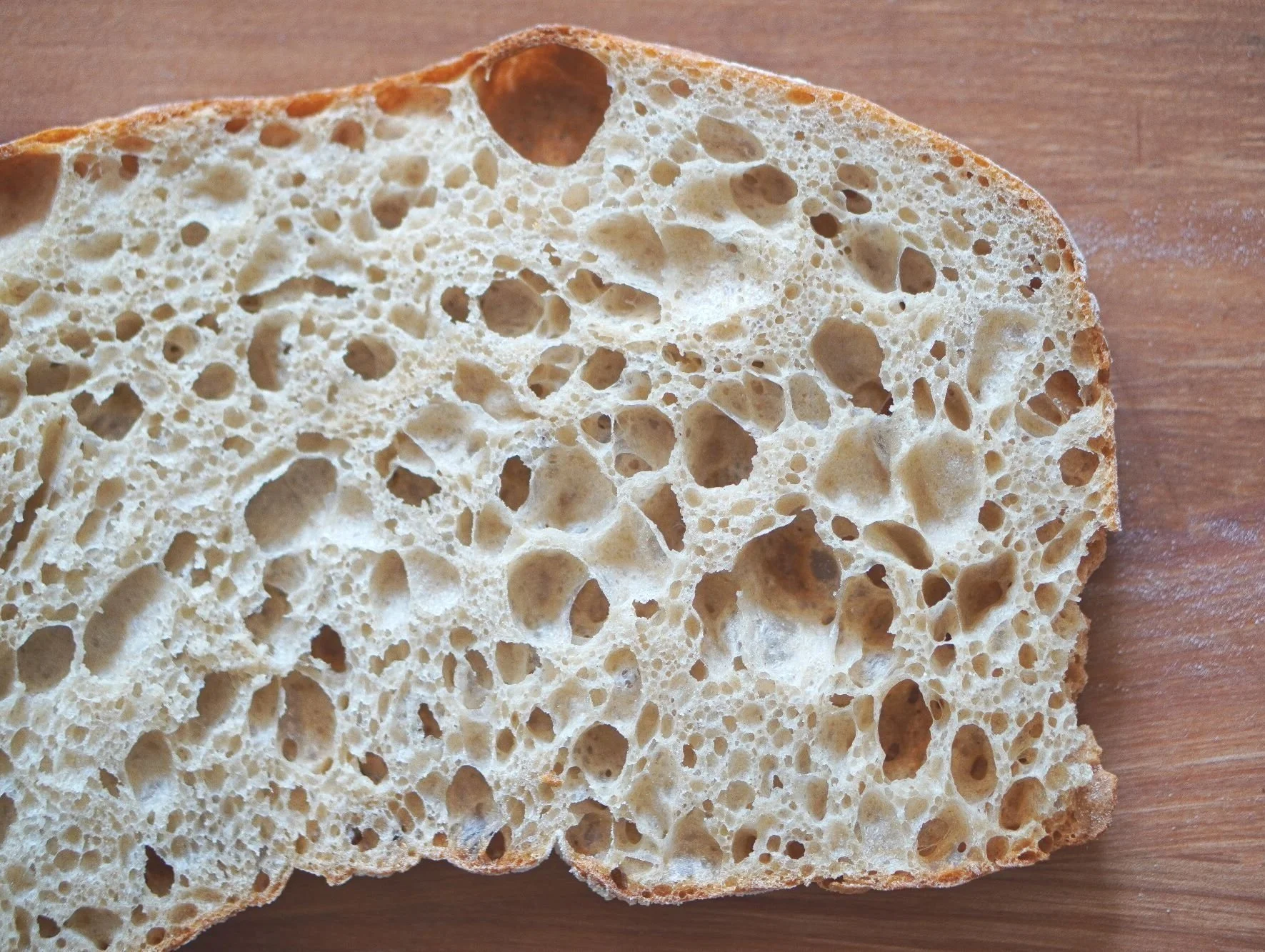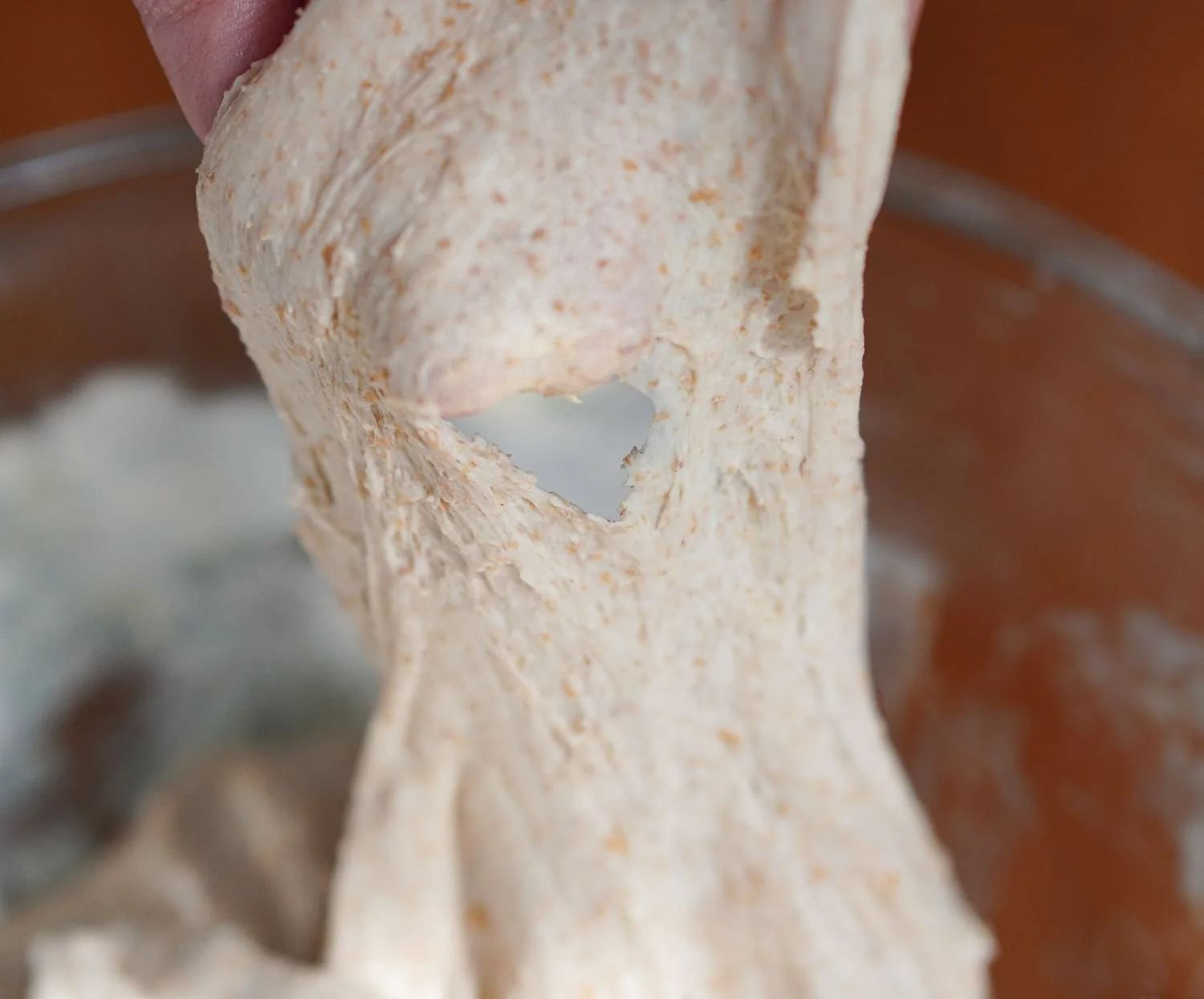What is Gluten?
Is Gluten Unhealthy?
Gluten has become a dirty word, but unless you have an allergy to gluten, gluten is not bad for you! In fact, whole grains containing gluten have essential vitamins and minerals. As long as you don’t have celiac or a wheat allergy (and most people don’t), you should be OK.
But What Is Gluten, and Why Is It in Bread?
Gluten is formed when two proteins present in wheat, glutenins and the gliadins, connect together. Several other grains have gluten, such as rye and barley, but it’s most concentrated in wheat.
In fact, have you ever wondered what the difference was between pastry flour, all-purpose flour, and bread flour?
The air pockets in this ciabatta would not be possible without gluten.
If you guessed gluten content, that you are absolutely correct! Pastry flour has the least amount of gluten, all-purpose is middle of the road, and bread flour has the highest amount of gluten. That just shows you how important gluten is to bread.
This 100% rye sourdough is flat with a dense crumb because rye flour has low gluten.
And us bread lovers are lucky that gluten is found in wheat at such high concentrations as this protein is essential for the structure of the bread. See those air pockets in the sourdough ciabatta? That wouldn’t be possible without gluten. When glutenins and gliadins connect to form gluten, the dough becomes strong yet elastic, which is essential to trap these air pockets when baking while also allowing the dough to expand.
This is also why we knead dough, or in our case, perform stretch and folds. These are to build the gluten in the dough and strengthen it, so the dough can hold its structure when baking.
Without proper gluten formation, your dough will be unable to hold its shape. It will flatten out and not have those large air bubbles. You can see that with this 100% rye sourdough. Since rye is a low-gluten flour (not NO gluten, mind you), the end result will be a flat disk. It’s still delicious, but it’s a totally different result than a bread made with a high-gluten flour.
How Do You Develop Gluten?
This dough is passing the windowpane test as I can see my finger through it. The gluten on this dough is well-developed.
While you can knead dough to build gluten (which I do here for my sourdough bagel recipe), I usually perform stretch and folds instead. This is typical of many sourdough bakers (although, it must be said, that there are a variety of methods). Stretch and folds are when you stretch a corner of your dough and fold it over. Then, you continue for every corner. You can see me performing them in a video here. A standard procedure to strengthen gluten is to perform these stretch and folds every thirty minutes until the gluten is well developed. This usually takes 3-4 rounds and is done prior to bulk fermentation.
This dough failed the windowpane test. I stretched the dough to try to see through it, but it ripped. I need to wait thirty minutes and perform another stretch and fold.
When you want to check if your gluten is developed, you can perform a windowpane test. You can see me perform a windowpane test here or look at the pictures on the right. Stretch out a bit of dough, and check if you can see through it. If you can stretch the dough far enough to see through it, then your gluten is well developed. However, if your dough breaks, you may want to perform another stretch and fold.
Bottom Line?
Gluten is A-OK for most people and an essential component in bread! If you think you have trouble digesting gluten, check with your doctor to make sure you don’t have celiac disease or an allergy that might be causing you problems.
While it is tricky (trust me, I’m trying), there are methods to make gluten-free sourdough. I have a gluten-free option in my sourdough starter recipe, but I have not mastered a gluten-free loaf yet. I do have gluten-free options for this banana bread and peanut butter cornbread, both using sourdough discard.
Luckily, most people need not fear gluten.
Happy baking!




